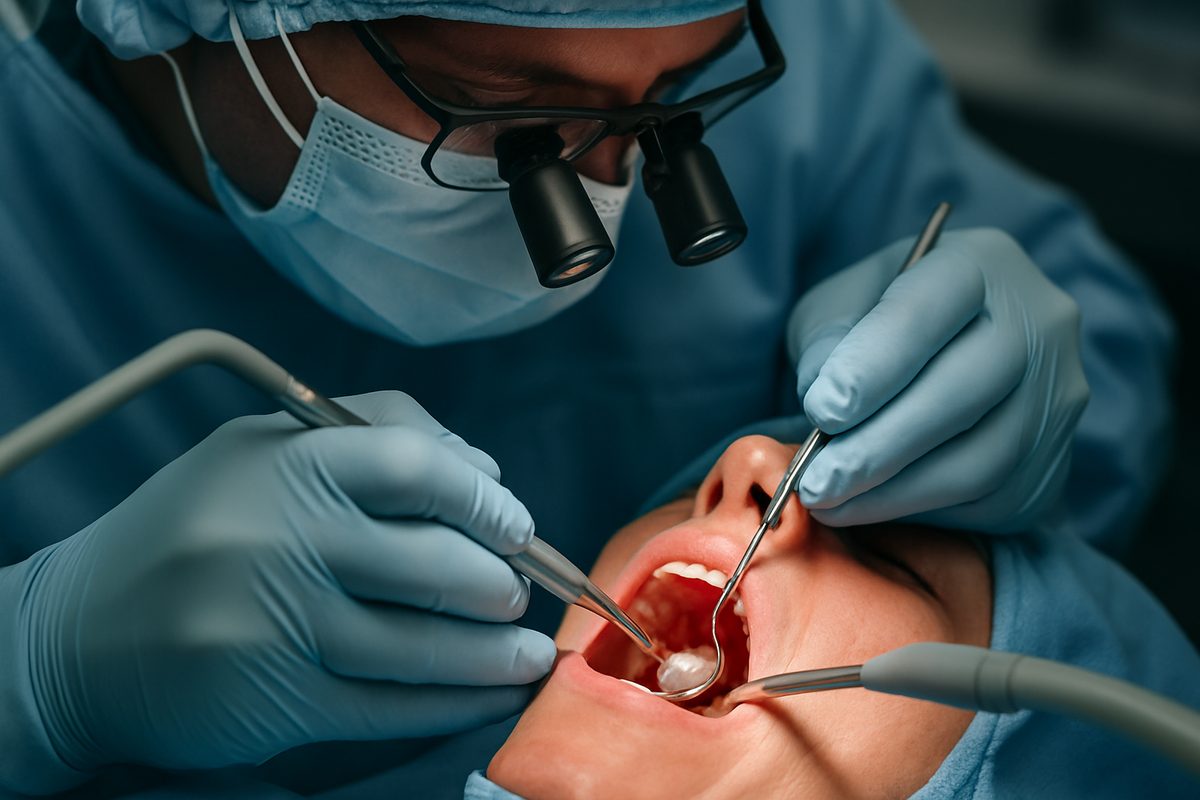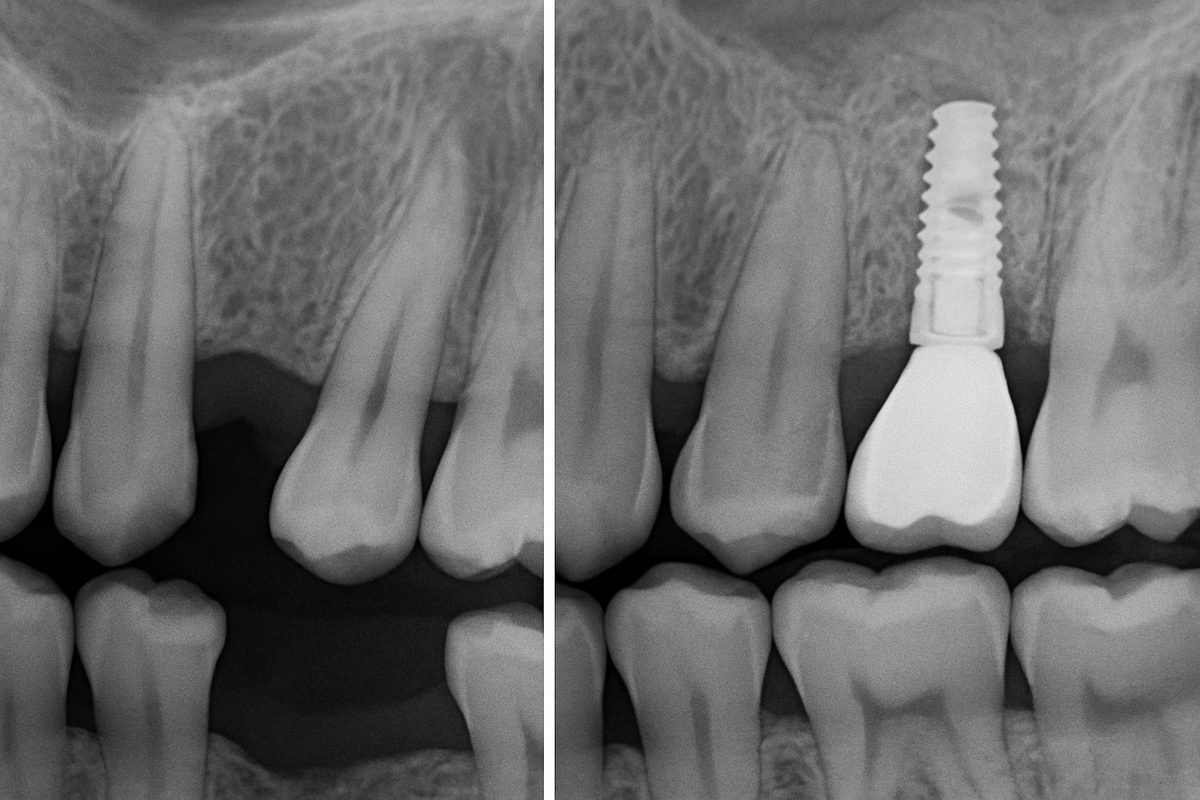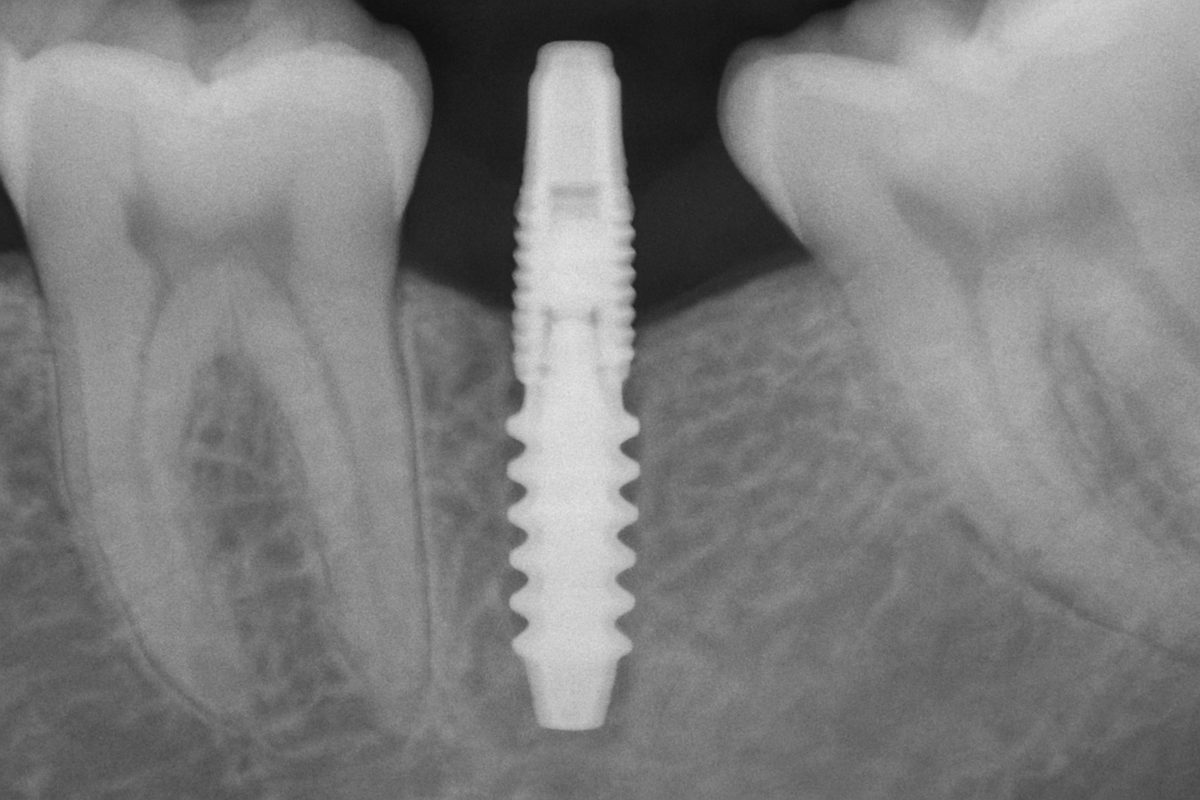Blog - St. Louis, MO
Tips, Facts, And The
Latest In Dentistry

Everything To Know About Surgery On Tooth & Dental Implants

If you’re facing a complex dental problem, this guide covers everything to know about surgery on tooth and how dental implants may fit into treatment. It’s written for patients who want clear answers — what the surgery involves, how implants are planned, and when to seek expert care. Read on to learn what a surgery on tooth looks like, how to prepare, and when to call a specialist.
What “surgery on tooth” means
A surgery on tooth refers to any dental procedure that requires cutting soft tissue or working on bone to fix a problem. Examples include surgical extractions (for broken or impacted teeth), apicoectomies (removing the root tip after a failed root canal), and exposure procedures for teeth that haven’t erupted. These are more involved than routine cleanings or simple extractions.
Common reasons you might need a surgery on tooth
Surgical extraction for broken or impacted teeth
When a tooth is fractured below the gumline or stuck (impacted), forceps alone can’t remove it. A surgeon makes a small incision, may remove bone, and extracts the tooth in pieces to avoid damaging nearby structures.
Infection, abscess, or failed root canal
Persistent infection around a tooth root can require surgery to remove diseased tissue or the root tip. This stops infection spread and relieves pain when nonsurgical root canal retreatment won’t work.
Preparing the mouth for dental implants
Surgery often prepares sites for implants: removing damaged teeth, grafting bone, or shaping the ridge. These steps create a stable, healthy foundation for future implant placement.
What happens during a surgery on tooth
Your team will do a pre-op exam and take imaging. Sedation options range from local anesthesia to IV sedation for comfort. In the operatory, the surgeon makes a small incision, performs any needed bone work, removes the tooth or tissue, and places sutures. Most procedures take 30–90 minutes depending on complexity.
Tools and imaging that make surgery safer and more predictable
Advanced tools improve safety: 3D cone beam CT gives a detailed view of bone and nerves; digital x-rays and intraoral scans help plan treatment; guided surgical navigation and 3D-printed guides let the surgeon place implants precisely where planned.
Recovery after a surgery on tooth
Expect pain and swelling for 48–72 hours, bleeding the first day, and gradual improvement over 1–2 weeks. Use ice, rest, a soft diet, and prescribed pain meds or antibiotics as directed. Keep the area clean but avoid vigorous rinsing early on. Call your dentist for fever, heavy bleeding, severe numbness, or worsening pain.
Risks, complications, and how they are minimized
Common risks include infection, dry socket, temporary nerve irritation, or sinus communication. Proper planning with 3D imaging, sterile technique, and experienced surgical skills greatly reduce these risks. Follow post-op instructions closely.
Surgery on tooth + dental implants: timeline and options
Implants can be placed immediately at extraction or delayed after healing. Bone grafts may be needed before implant placement. Options include single implant crowns, implant-supported bridges or dentures, and full-arch All-on-X solutions. Your surgeon will recommend the best timeline for long-term success.
Choosing the right team for surgery on tooth
New You Smile offers a private surgical suite, 3D planning, X-Nav guided surgery, and an on-site lab to control quality and timing. Dr. James Fetsch brings extensive implant experience and uses guided techniques to improve outcomes.
Quick FAQ and next steps
Is surgery painful? Most patients are comfortable with local or IV sedation; post-op pain is manageable with meds. How long until I can eat normally? Soft foods for 1–2 weeks; return to normal diet as healing allows. When will an implant be placed? Immediately in some cases, or delayed 3–6 months after grafting. How do I schedule a consultation? Contact New You Smile to book an evaluation for a surgery on tooth or implant plan.
Call to action
If you think you need a surgery on tooth or want implant-ready planning, request a consult with New You Smile to review options, imaging, and a personalized treatment plan.



